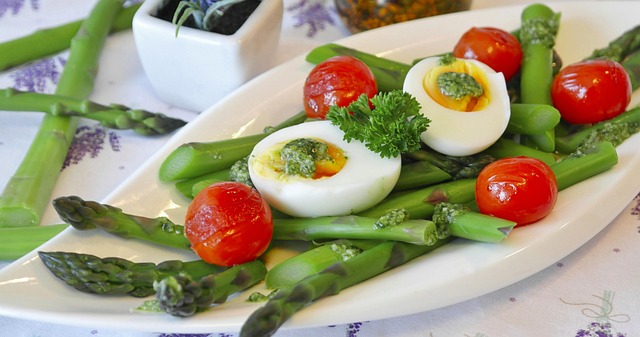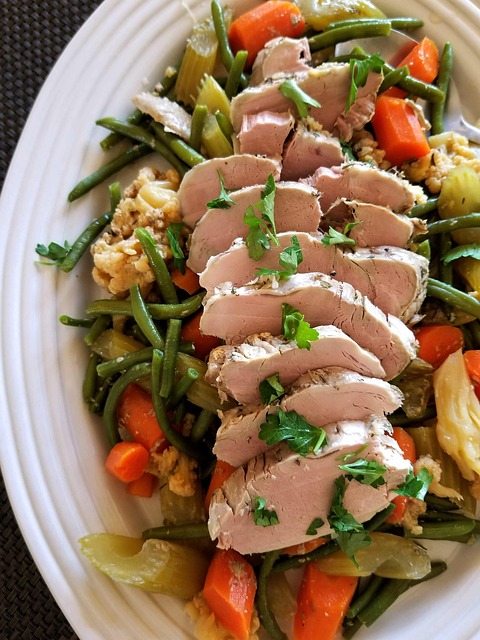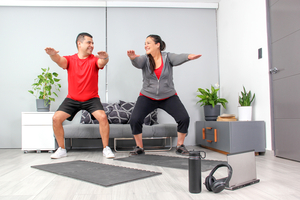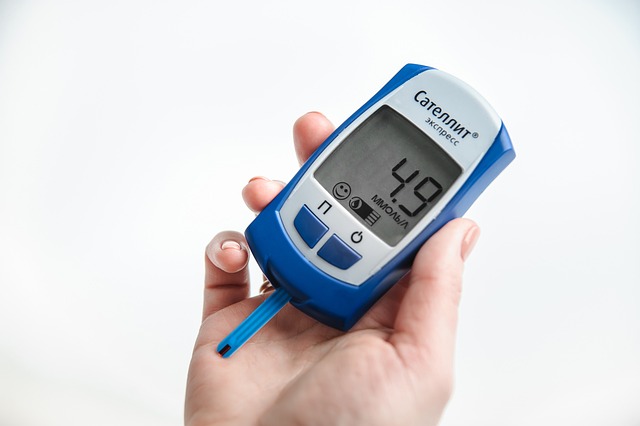In this article:
- Healthy snacks can satisfy hunger between meals, provide essential nutrients, and support progress towards health and weight loss goals.
- A healthy snack fits into daily calorie goals, has filling nutrients like protein or fiber, and provides essential vitamins and minerals.
- Choose nutrient-dense foods from one or more food groups to build nutritious snacks.
- Lark can help you choose healthier snacks and meals 24/7 to reach your weight loss and health goals. See if you may be eligible today.
Healthy snacks can satisfy hunger, sustain energy, and add to your daily nutrient totals. While so-called “snack foods” are often low in nutrients and high in calories, more nutritious foods can help you reach your weight and health goals if you choose to snack. Here’s what you should know about snacking, which foods to look for, and how to build snacks that meet your needs.
Most Americans Are Snackers
How do your meal and snack patterns compare to the typical American adult’s patterns? The USDA reports that 95% of Americans have at least one snack most days. Nearly half of American adults have one or two snacks daily. In addition, 58% of adults report having three meals daily, and 35% have two meals per day.
Snacks provide 23% of daily calories, on average, but only 13% of protein. They tend to be higher in sugar and sodium than meals on a per-calorie basis, but they’re also more likely to provide higher amounts of calcium on a per-calorie basis.
Defining “Snacks”
How do you know if an eating occasion is a meal or a snack? People define “snacks” in a variety of ways. Here are some common ways to distinguish snacks from meals.
- They don’t fit within a standard meal like breakfast, brunch, lunch, dinner, or supper
- They consist of “snack foods” like chips, pretzels, crackers, cookies, and snack cakes
- People eat them away from the table, such as in the car, standing up, or walking
What Can Healthy Snacks Do for You?
Healthy snacks can satisfy hunger between meals. They can help you maintain energy and blood sugar levels if they start to dip a couple of hours after a meal, but before it’s time for your next meal. With careful planning, snacks can allow for healthy eating with more flexibility when you’re on the go.
As with meals, snacks can have other roles beyond fulfilling physiological needs. People can snack while socializing, to satisfy cravings, or respond to emotions like stress.
What Makes a Healthy Snack
A healthy snack helps you meet your nutrient needs while staying within your calorie, carb, and fat limits.
Calorie and Carb Counts for a Healthy Snack
If you’re calorie or carb-counting to lose weight or prevent weight gain, remember to count calories or carbohydrates from snacks, not just from meals.
The amount of calories or carbs to include in your snack varies depending on your daily goals and how many meals and snacks you have per day. Here are some examples.
Food Groups to Include in a Healthy Snack
Look for nutrient-dense foods for your snacks. Consider choosing 1-2 small portions of a food, plus as many raw vegetables as you like. Here are some nutritious foods within a variety of food groups.
“Snack Foods” Can Be High-Calorie or Low-Nutrient
Watch out for snack foods that are high in calories and/or low in nutrients. Here are some examples of low-nutrient snacks that are less likely to keep you on your healthy eating plan.
- Savory, crunchy snacks like crackers, potato and tortilla chips, and cheese puffs
- Sugar-sweetened snacks like cookies, snack cakes, fruit snacks, and candy
- Ultra-processed foods like meat sticks and creamy dips
- Fast foods like crispy chicken wraps, fries, and pizza
Keep these types of snacks as occasional treats so you can get more nutrients from your regular snacks.
Building Smart Snacks: Examples
Here are some examples of nutritious snacks. You can adjust portions to meet your needs.
- Pasta salad with ½-1 cup of chopped vegetables like tomatoes, onion, zucchini, ½ cup of cooked whole-grain pasta, and 2 tablespoons of vinaigrette dressing
- Bread with pureed eggplant spread with pureed eggplant with garlic and lemon juice, 2 teaspoons of olive oil, and 1 slice of whole-wheat bread
- 1 cup of carrot sticks and 1 sweet potato in strips, baked in 2 teaspoons of olive oil
- Pear slices with 1 ounce of goat cheese and ½ ounce of walnuts
- 1 ounce of whole-grain crackers with 3 ounces of tuna
- ½ cup of low-fat cottage cheese with ½ cup of chopped tomato and chopped parsley or mint
There are more snack ideas here, and here are some healthy snack recipes.
Swapping Snacks
Here’s how you can make typical snacks healthier by changing portions and making simple swaps.
How Lark Can Help
Knowing which snacks to choose and how much to have can help you make more progress towards your goals. Lark can help you make more small changes to improve heart health, lose weight, and manage or prevent chronic conditions. Your Lark coach is available 24/7 for encouragement, nutrition and physical activity coaching, and habit tracking. Lark can help you make healthy choices and establish habits that fit into your lifestyle so you can lose weight and keep it off with or without GLP-1 medications.
Click here to see if you may be eligible to join Lark today!











.webp)








